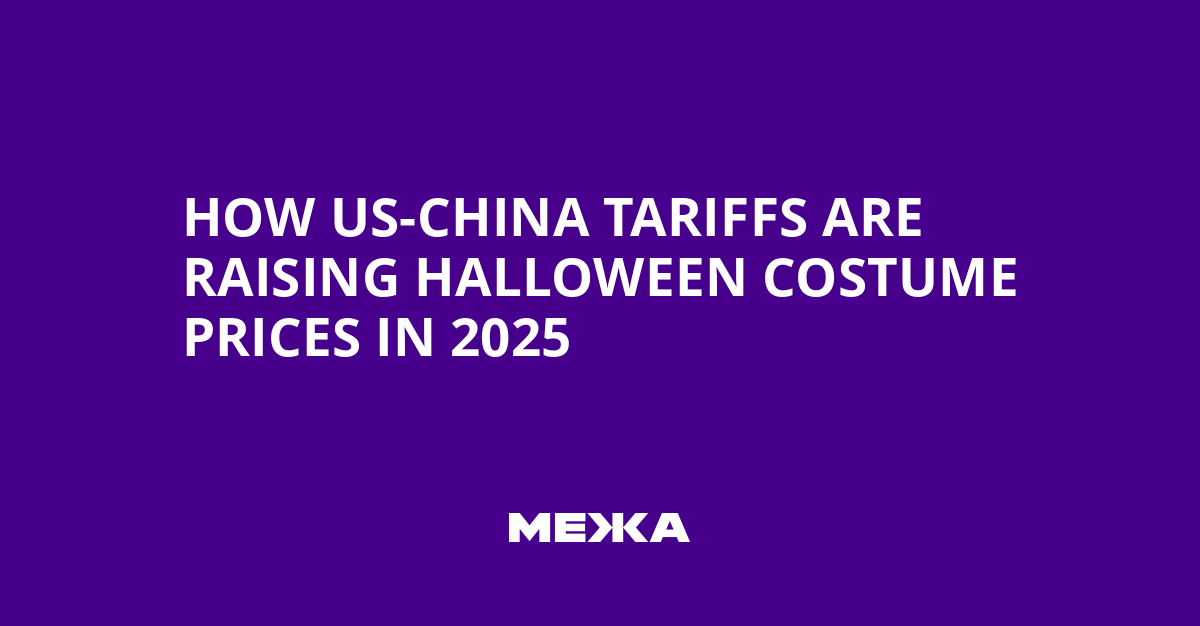In Santa Cruz, California, Chris Zephro’s warehouse is packed with latex masks, props from the Saw movie, and zombie apocalypse board games – a testament to his passion for the horror genre.
“Horrors aren’t necessarily tied to Halloween. In fact, it’s a lifestyle.”
– Chris Zephro
However, costs from the US–China trade war have sharply reduced the profitability of the business: since April, duties on Chinese goods rose from around 20% to a peak of 145%, and in May they were lowered to 30%. Many manufacturing orders were paused, as importers decided that shipments for the Halloween season would be too expensive.
According to the National Retail Federation (NRF), this year’s Halloween stock will be tighter and prices higher. It is expected that the average spend per shopper will be about $114.45, $11 more than last year’s figure.
A White House spokesperson Kush Desai told CNN that real prosperity is “good jobs” and a “thriving industry,” not “cheap Chinese imports”; the administration says that rising wages and historic trade deals confirm the success of the “America First” policy.
But for Zephro’s business these words do not lift the burden of tariffs. He notes that tariffs have hit every step of his company, forcing him to cut staff – the first time in 15 years of operation that 15 workers were laid off, which he called “one of the worst days of my life.”
“I’d like to close the door and talk to Trump, because he’s not a fool. He took the same business school courses as I did, so let’s lift the curtain.”
– Chris Zephro
Tariffs’ impact on the Halloween industry
The sister of two other manufacturers confirms the serious pressure: Reina Hernandez is assembling a costume for her six-year-old son – he wants to be Carl from The Walking Dead – but the cost of the costume is already rising due to tariffs, so every piece is bought separately to spread out the costs.
According to NRF, 79% of shoppers expect costumes to become more expensive this year because of tariffs. Importers partly offset some of the costs – Zephro covers roughly 60–70% – the remainder is passed on to retail customers such as Ryan Goldman of Phantom Halloween. Goldman has to decide how much of this to pass on to the end consumer.
“The idea is to keep prices as low as possible so that tariffs don’t cause prices to rise too much.”
– Ryan Goldman
Expected costume costs will rise by roughly $5–$10 per unit, with manufacturers trying to keep prices on children’s costumes down, while adults’ will go up. Goods made outside China may not see a sharp increase or may see none at all: Zephro’s masks, for example, are made in Mexico and escape tariff pressure under current agreements, while cosmetics come from manufacturers in Vietnam, India, or the United Kingdom.
Exporters are not eager to buy large, elaborate props this season: Phantom Halloween’s display features “Cagey the Clown” – a dead-end doll that was supposed to sell for about $600 versus $399.99 last year. Zephro has also paused production of 1:6 scale figurines, as they would become unsellable at higher prices. By midterm season he will likely be able to resume production, but for now only those items that were imported before tariffs remain.
Even if the prices of some items stay stable, tariff stress is felt in every segment of the Halloween industry. The American Halloween and Costume Association told CNN that the situation is causing significant concern, particularly for “smaller manufacturers who lack the scale to mitigate costs or move operations domestically.” Regulatory and infrastructural barriers to moving production back are substantial, from regulatory burdens to the availability of raw materials.
“If you truly want to bring production back here, you need to understand why it left in the first place, and start from there,” sums up Zephro. “And then encourage companies to manufacture here, not punish them for using factories that no longer exist here.”
The family-owned Goldman of Phantom Halloween has seen external factors affect the business: from crises to natural disasters, and this year fires and tariffs joined the list – a surprise since inflation seemed behind us. “It turns out everything costs a little more,” Goldman concluded. So for this holiday he is trying to minimize cost increases for customers.
“I’m not too political – we’re simply dealing with the consequences. The consequences aren’t brushed aside, because they create financial strain on many families.”
– Goldman
According to association representatives, the situation also concerns small and mid-sized manufacturers that do not have the scale to adjust costs or move production domestically. They emphasize that barriers to reshoring and regulatory requirements reduce the competitiveness of small businesses, especially during Halloween season.
In sum, while some products may hold prices, the overall financial pressure from tariffs creates serious problems for the Halloween market: from manufacturers to retailers and, ultimately, for consumers who will feel higher costs for costumes and accessories.
“Restrictions requiring manufacturers to move production back to the U.S. are a major obstacle for many small-scale companies, and without support they will be forced to cut volumes or disappear from the market.”
– American Halloween and Costume Association
